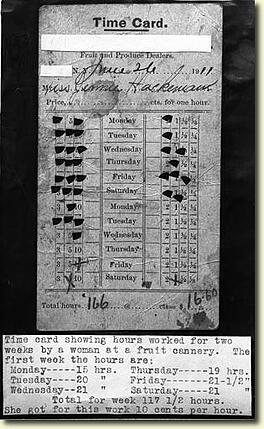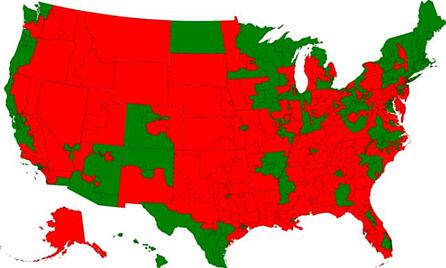Jake Richardson
Recent Posts
How To Create and Manage HR and Payroll Service Level Agreements
Posted by Jake Richardson Dec 16, 2014 10:27:00 AM on
It might take some time to find a great guide for setting up an effective service level agreement if you were to search online.
So we found it for you!
How to Establish Service Level Agreements by Naomi Kartin
This document is a 33 page excerpt of one of her e-books. We summarized it here in this article, so you can get an overview of it. Ms. Kartin also has an e-book about how to set up a service level agreement.
For the purposes of this article, we will focus on an SLA between HR and Payroll staff. After reviewing many HR Payroll SLAs, we concluded that many of these SLAs (particularly in the non-profit and education sectors) are not SLAs at all. Instead they are procedure or operations manuals masquerading as SLAs. Lists of procedures, i.e. how to do things and when they are to be done, are not service level agreements. They are items you would find in an operations manual. These are non-negotiable items.
Timesheet Software History: Improving Business Operations
Posted by Jake Richardson Nov 20, 2014 8:17:00 AM on
It All Started With IBM
IBM resulted when several companies merged. They were Computing Tabulating Recording Company, ITR, Bundy Manufacturing and two others. If you recognize the name Bundy, you probably know Bundy invented the first or the first most common mechanical time clock. In an 1890 patent, Bundy described time recording for workers from other devices, but his allowed each worker to have her or his own key. Many people today still remember physical timecards that were stamped by a mechanical clock with time in and time out numbers and dates to document employee hours worked. When you consider the history and that IBM formed in 1911 in relation to this type of technology, it can be a fascinating subject.
The ability to automate the counting of employee time to produce reliable, accurate payroll systems was a great boon to business, because employee time cards had to be hand counted and processed, which introduced errors. Some employees were overpaid, others were underpaid. Accuracy in employee payments systems surely made businesses operate more smoothly and helped with employee relations as well.
It would be over sixty years later that a punch card system would be connected to a computer processor. The Zilog Z80 was a microprocessor used in the 1970s for desktop computing and some military systems. Zilog was founded by a former Intel employee who had worked on the 8080, and similar microprocessor. The Z80 wound up becoming one of the most popular CPUs. It's an obvious point to anyone now that desktop computing had many advantages of mainframes-mainly lower maintenance costs and miniaturization.
3 Employee Timesheet Fraud Cases: The Brazen and Bold
Posted by Jake Richardson Nov 18, 2014 7:56:00 AM on
Timesheet fraud is distressing because of the money that companies lose, but also due to the breaches of trust that occur. A research study conducted by the Association of Certified Fraud Examiners found that the average act of occupational fraud, where an employee embezzles money from his or her employer, resulted in organizational losses of about $60,000 per incident.
Employee timesheet fraud, a reportedly more pervasive problem, can result in similar losses. While nobody wants to make news for committing timesheet fraud or going to jail, there are countless stories every year. Here are three doozies.
Management-Directed Timesheet Fraud
When executives are involved the fraud can be much greater. One former software CEO of Saba, a talent management software company, was ordered by the SEC to refund $2.5 million dollars in bonuses and stock options because two of the company’s Vice Presidents cooked up a plan to have customer service reps and consultants working abroad falsify their timesheets, or to not report time they worked. The false timesheet data significantly affected financial results. The SEC found that the software company submitted false financial data, to the tune of about $70 million dollars over a five year period.
Overtime Pay Not So “Clever Tricks” and Ruby Tuesday
Posted by Jake Richardson Oct 14, 2014 9:00:00 AM on
There are stories every week of how companies get sued because they violated overtime laws. Then there are stories that really turn your head. This is the story of how major restaurant chain, “Ruby Tuesdays,” brazenly violated overtime rules in several ways.
Ruby Tuesday’s managers apparently thought they could avoid overtime liability by using a scheme that discouraged proper overtime documentation by employees. Ultimately, a class action law suit against the company cost them $3 Million (a lot of legal fees) and bad publicity with customers, current, former and potential future employees.
Topics: Overtime tracking
6 Common Errors in FMLA Leave Requests that Can Trigger Lawsuits
Posted by Jake Richardson Sep 29, 2014 6:41:00 PM on
The purpose of the Family Medical Leave Act (FMLA) is easy enough to grasp, but common mistakes can lead to costly lawsuits.
Information and process errors
- Not using FMLA request forms. Standardized FMLA request forms better ensure that an employee will provide 100% of the information needed to make an approval decision. Employees should communicate the details of their FMLA request informally before a formal request is made.
- Not including medical information from doctors. Often the only valid information that can be used to grant FMLA leave is medical information from medical professionals.
- Not defining the period of incapacity. The request must clearly define the start and end dates of the FMLA leave.
- Not having a process that allows medical information to be kept private. Many medical conditions might be embarrassing to an employee if know to their supervisor or other employees in the firm.
Low Awareness for Health Exchange Sites for Most Uninsured Americans
Posted by Jake Richardson Dec 12, 2013 11:33:50 AM on

Gallup has released some very interesting data based on their research about the number of uninsured Americans who are unaware of the health exchanges. According to their surveys, only about 30% of the uninsured are aware of the health exchange sites.
About 44% of the insured who said they will seek insurance will get it from a health exchange. There are many reasons why people might be avoiding the exchanges. One is simply not trusting the government for anything. A CBS News poll from this year found only about 20% of their respondents said they do trust the government.
Another potential reason is that they have heard enough or too much negative publicity about the health exchange website problems that they won't bother trying to apply because they believe they would be wasting their time. Another reported problem is that the sites might have security issues, so not signing up now could seem like a wiser choice to avoid any issues with identify theft.
Some of those who are not flocking to the sites are unfamiliar with the sign-up process and how to navigate through the various options to obtain insurance. This barrier could be overcome easily once there is more buy-in and use of the sites. For others, the issue may be the the digital divide. Older people and the less well off still have some lack of comfort with using the Web and understanding how to complete an online application. They also might not have consistent Internet access.
(One report has contradicted this idea though, saying it is older Americans that have been signing up, because they have health problems that need to be addressed.) What has been unexpected is the low turnout in younger enrollees.
It appears the state health exchange sites are receiving more applications and visits than the federal one. This is likely to be because it is easier to create a single site for one state and insurers and residents than it is for a whole nation. All eleven of the state-run exchanges and at least 1,000 enrollees, but 27 of the states that used the federal exchange site had less than 1,000. It has been estimated that 95% of the enrollments for 2014 have not happened.
If the state health exchange sites are signing up the most people now, this trend may continue because the federal site still remains less than 50% complete.
Having health insurance could relieve stress for many workers around the country, because health insurance can help prevent very large health care costs for individuals. Even with a large deductible, health insurance is generally a better bet than having to pay for the cost of an injury or illness out of pocket.
Image Credit: Blue String, Wikipedia
Workforce Management and Flexibility in the Workplace
Posted by Jake Richardson Oct 28, 2013 7:00:00 AM on
A recent Forbes piece extolled the virtues of workplace flexibility as a driver of employee satisfaction. “Studies show that organizations that offer workplace flexibility have less absenteeism and turnover, and higher levels of engagement and productivity. Again, it comes down to control. We all need to feel in control of our lives, and by working with talent on flexibility, you grant them real control. They feel trusted and valued, and their investment in the work, and in the organization, grows.” ( Meghan M. Biro, 5 Reasons Why Workplace Flexibility Is Smart Talent Strategy)
Sceptics may balk at this notion, but is this hesitancy to accept workplace flexibility outdated and even potentially damaging? On tne surface, it is easy to say yes, because of many different changes in the workplace. For one, information technology is rapidly changing the way business is conducted. It has been somewhat common for organizations to allow remote workers for some years now. Additionally there are small companies that have only telecommuters and many start-ups function by having workers contribute from home in order to avoid the overhead associated with rent, utilities and office equipment. Working from home allows them to stay as lean as possible and conserve funds for only when they are absolutely necessary. Some home workers might also only be working for equity, so there is very little or even no capital investment. Without this kind of workplace flexibility, it would not be possible to make innovative, tactical organizations.
As a Deloitte analysis explained, "For example, the average company pays between $12,000 and $15,000 per employee in facility cost, yet 30 to 40 percent of physical workspaces are vacant at any given moment on a regular business day. Traffic jams cost Americans in urban areas an estimated 4.2 billion hours that flexible workers can convert into productive time. So as much as anything else, workplace flexibility is about happy directors and shareholders."
Further, in some cases working from home may increase productivity, "Countless studies confirm the link between workplace flexibility – particularly telecommuting – and productivity. Brigham Young researchers found that “Offering flexibility translated to anywhere from eight to 13 hours more a week of productivity per employee without adding stress.Managers who avoid excessive workload, distribute work fairly, allow flexible scheduling and are considerate of employees’ lives will bring increased revenue, said a study of 50,000 U.S. workers by International Survey Research." (Source: WFC Resources)
In fact, a document produced by the Executive Office of the President Council of Economic Advisers noted some of the major demographic trends taking place right now that suggest flexible workplaces will proliferate:
- Women comprise nearly one half of the labor force;
- In nearly one half of households all adults are working
- In 2008, approximately 43.5 million Americans served as unpaid caregivers to a family
member over the age of 50
- Nearly one fifth of employed people were caregivers who
provided care to a person over age 50.
- The increasing demand for analytical and interactive skills
those largely obtained through post
-Second ary education means it is all the more important and common for
individuals to pursue additional education while also working
Workplace flexibility requires greater trust of employees and this trust may be reciprocated back to the employer. While granting this level of trust may sound completely counterintuitive, it makes sense from the perspective that we have all used at some point: no one likes to be micromanaged. It is ironic that some management styles insist upon all workers being onsite, yet this is exactly where some employees spend more time chatting or being bogged down in overly long meetings that waste time and sap their energy.
While flexible workplaces may currently number in the minority and so this kind of openness and employee accommodation appears 'fringe' to some, it could be argued that it makes too much sense to ignore. To strike a balance between greater flexibility and employee accountability, tracking of projects and hours may be necessary with time and attendance software, such as that offered by Pacific Timesheet.
Image Credit: Russavia, Wikipedia
50% of Companies Use Mobile Apps to Engage Employees
Posted by Jake Richardson Oct 25, 2013 7:00:00 AM on
A survey of 600 companies by Vanson Bourne this year found that only about half are using mobile apps to enage their employees. A little less are using them to interact with their customers.
This is not good news, considering the fact the app developers are creating many new technological solutions and will continue to do so. The mobile market is also growing, thanks to increasingly more powerful devices such as smart phones and pads. Eventually, the workforce may not ever use anything as large and cumbersome as a desktop and even laptops may be on the way out.
Outdated operating systems that are slow and crash too often, in addition to having security issues need not be unreasonably supported in the coming years. Some of these new apps may eventually become indispensable, rather than auxilliary add-ons.
Topics: Employee reports
Construction Morning Huddle Meetings Good for Safety and Daily Work Plans
Posted by Jake Richardson Oct 24, 2013 7:00:00 AM on
Workplace accidents cost billions each year, "In addition to their social costs, workplace injuries and illnesses have a major impact on an employer's bottom line. It has been estimated that employers pay almost $1 billion per week for direct workers' compensation costs alone." (OSHA.gov)
Main Cause of Increase in Part-time Jobs Not Obamacare, Says Study
Posted by Jake Richardson Oct 14, 2013 10:32:00 AM on
Two researchers at the Federal Reserve Bank of San Francisco have conducted a study that contradicts the general notion found in some press stating that the Affordable Care Act is likely to wreak havoc on the national economy by causing employers to change fulltime positions to part-time in order to avoid having to pay for health insurance for their employees.
In their own words, "Moreover, recent research suggests that the ultimate increase in the incidence of part-time work when the ACA provisions are fully implemented is likely to be small, on the order of a 1 to 2 percentage point increase or less (Graham-Squire and Jacobs 2013). This is consistent with the example of Hawaii, where part-time work increased only slightly in the two decades following enforcement of the state’s employer health-care mandate (Buchmueller, DiNardo, and Valletta 2011)."
However, they cite a UC-Berkeley study that says the number of workers who are most at risk from having their hours reduced is very small, "The 2.3 million workers identified as at greatest risk for work hour reduction represent 1.8 percent of the United States workforce. This is consistent with the research on the impact of Hawaii’s health care law on work hours. Hawaii requires firms to provide health insurance to employees working 20 hours a week or more, so the cost to employers for full time workers are much greater in Hawaii than under the ACA, while the hour threshold is lower. Buchmueller, DiNardo and Valetta (2011) found a 1.4 percentage point increase in the share of employees working less than 20 hours a week as a result of the law. In Massachusetts, where the employer penalty is smaller than in the ACA ($295 per year), there was no evidence of a disproportionate shift towards part time work compared to the rest of the nation."
So, what does all this mean? It is a counterpoint to the noise in the mass media about the coming doom for American workers. We know the mass media resorts to hyperbole and even manipulation at times, in order get attention from the most number of people.
Academics like these reseachers may work many hours by themselves, sequestered far away from the bright lights trying to figure out what is happening in the real world using data and careful analysis. They can still make mistakes, but the foundation of their inquiry is not just stories, or anecdotal evidence.
Anecdotal evidence can have a strong appeal in mass media, because everyone likes a good story. Some of the most appealing stories are the ones that are also carry the strongest emotional charge. Fear and pity are some of the emotions being played up by stories of workers having their hours cut. Victimhood is also in play, because some of the news stories make it seem like the government is going to be the cause of their suffering.
Along with academic research, there are other news stories telling us that not every company is going to cut employee hours. In fact, Starbuck's has stated they will not cut employee benefits. The positive publicity generated by this public announcement probably has already paid some dividends, and was both an effective recognition of their employees value and a clever public relations move.
Because of the ACA rules, employers may be even more motivated to be careful about time tracking. Given the important emerging Big Data trend - and greater use of predictive analytics - it seems we are all headed down the road toward a more scientific kind of inquiry, and less emotionally manipulative propaganda.










